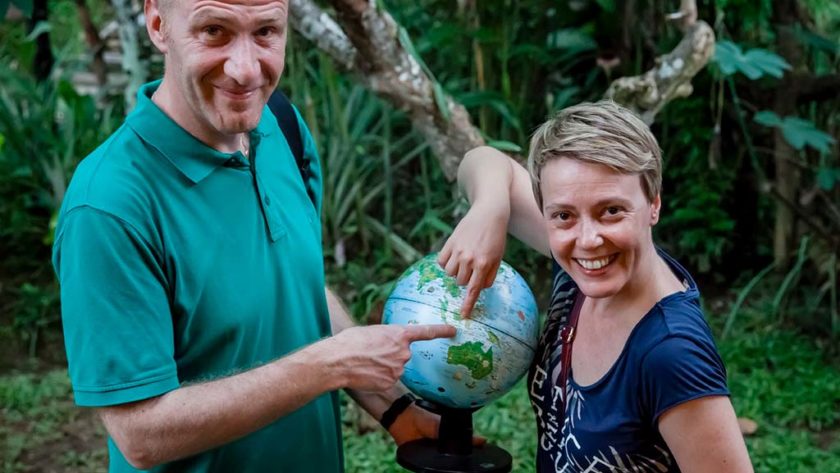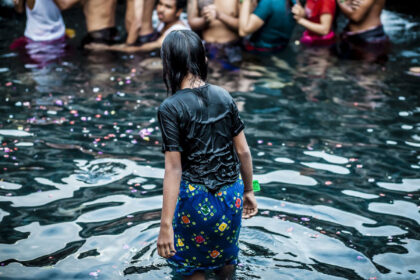GEO FACTS
Bali is a tropical island, around 8 degrees south if the equator, covering the area of 5,780 square kilometers. It is part of Indonesia, the world’s largest island country with more than 13 thousand islands. According to census in 2014, Bali’s population is around 4.2 million people. Bali is also the only Hindu-majority province in Indonesia, with more than 80% of the population adhering to Balinese Hinduism.
On the other hand, Indonesia is the world’s 4th most populous country (260 + million) as well as the most populous Muslim-majority country (>87%). Java, which is located on the west of Bali, is the world’s most populous island, containing more than half of the country’s population.
RELIGION IN INDONESIA AND BALI
Prior to introduction of Hinduism (1st century CE) and Buddhism (6th century CE), the natives of the archipelago practiced animism, the religious belief that objects, places and creatures all possess a distinct spiritual essence. In Indonesian ancient mythology, unseen spiritual entity that has supernatural powers and may inhabit places such as large trees, stones, forests, mountains, volcanoes or generally sacred places is called Hyang. It is revered in ancient Javanese belief systems (Kejawen) as well as Balinese Hinduism.
Islam gradually spread through merchant activities by Muslim traders and adoption by local rulers since the 14th century, when the archipelago was still divided between various Hindu and Buddhist empires.
BALINESE HINDUISM
Balinese Hinduism (Agama Tirtha, Agama Hindu Bali) represents a distinct form of Hindu worship incorporating local animistic beliefs, ancestral worship and reverence for Buddhist saints or Bodhisattva.
The fundamental principle underlying Hinduism is the existence of order in the cosmos (called dharma) and the opposite disordering force called adharma. Hindus seek harmony and balance between these two forces as well as Sekala and Niskala (visible and invisible world), in order to free themselves from the never-ending cycle of reincarnation (samsara) and attain the liberated state of being called Moksha.
The cosmos in Balinese Hinduism is divided in three layers:
Svarga (Heaven, the abode of the gods)
Buwah (world of man) and
Bhur (world of demons and evil spirits punished for misdeeds on earth)
This division is mirrored in the human body (head, body, feet), layouts of temples and shrines found outside Balinese houses.
Balinese worship traditional Hindu gods such as Brahma, Visnu and Shiva (Dewa Siva).
In Balinese Hinduism however, One God or The Supreme Deity/Being is called Acintya or Sang Hyang Widhi, representing the origin of the Universe associated with the concept of Brahman or ‘Ultimate Reality’. All other gods and divinities (like Dewi Sri, the goddess of rice) are his various aspects or manifestations. Acintya is also often associated to The Sun God and depicted in naked human form with flames around him.
The most important festival for the Balinese is Galungan Day, a celebration of triumph of dharma over adharma. On that particular day, according to traditional beliefs, spirits of the dead ancestors descend from heaven, to return 10 days later (on Kuningan day). Galungan takes place on the Wednesday of the eleventh week according to the Balinese (lunar) calendar called Pawukon.
PHILOSOPHY OF LIFE
Traditional philosophy of life in Bali is called Tri Hita Karana, which roughly translated means “the three reasons for prosperity”or “the three causes of well-being”.
These are:
1. Harmony among people
2. Harmony with nature or environment
3. Harmony with God
Tri Hita Karana guides many aspects of Balinese life till today, from daily offering rituals, communal cooperation (gotong royong) to spatial organization in Balinese architecture and cooperative water management and irrigation system of the rice fields (called subak).
PARADISE CREATED
What is now known as Indonesia used to be a Dutch colony called Dutch East Indies, formed from the nationalised colonies of the Dutch East India Company (established in 1602), which came under the administration of the Dutch government in 1800.
During World War II, the Empire of Japan invaded and occupied the archipelago, effectively ending Dutch rule. Following the Japanese surrender in August 1945, Indonesian nationalists declared independence. The Netherlands formally recognized Indonesian sovereignty in 1949 at the Dutch-Indonesian Round Table Conference held in The City Of Hague.
In the 1930s, various Western anthropologists and artists such as Margaret Mead, Miguel Covarrubias and Walter Spies as well as Charlie Chaplin spent some time in Bali. Their accounts of the island and its people created a western image of Bali as ‘an enchanted land of aesthetes at peace with themselves and nature’. This sensuous image of Bali was further enhanced the West by a quasi-pornographic 1932 documentary Virgins of Bali about a day in the lives of two teenage Balinese “bathing their shamelessly nude bronze bodies”. The film mostly consisted of scenes of topless Balinese women. It was a great success in 1932 and almost single-handedly made Bali into a popular spot for tourists.
MODERN DAY TOURISM
In 1963, Bali Beach Hotel in Sanur was built by President Sukarno, boosting the tourism in Bali. Ngurah Rai Internaitonal Airport opened in 1970. The tourism industry is mainly focused in the south.
Some of the main tourist locations are the town of Kuta (with its surfer beach and shopping malls), Seminyak (Bali’s contemporary clubbing and fashion ground, besides Canggu), the east coast of Sanur, Ubud (towards the center of the island, representing cultural, wellness and art center of Bali surrounded by luscious rice fields and nature), Nusa Dua (complex of large 5-star hotels) and Uluwatu/Pecatu (hosting many famous beaches and private villas/cliff resorts).
Every year, more than 5 million foreign and domestic tourists visit Bali.






